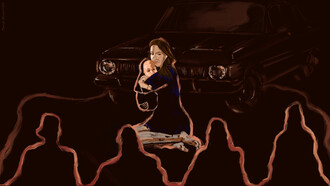The major component of Moroccan ancestral heritage, The Tbourida or Fantasia, is listed on the UNESCO list of intangible heritage of humanity. Deeply rooted in the Arab-Amazigh culture of the Kingdom, it is therefore legitimate that Morocco officially submitted, in 2019, an application file to include it on the representative list of UNESCO's intangible cultural heritage.
The Tbourida constitutes, within the national heritage, a major component of the practices related to the horse, it also crystallizes multiple dimensions of the immaterial cultural heritage, in particular the rituals, aptitudes and know-how relating to the traditional dress, the craftsmanship, in addition to the oral legacy inseparable from this equestrian practice. Since its appearance, evaluated by historians in the 15th century, the Tbourida has strongly contributed to the sense of identity and continuity of Moroccans. The Tbourida is an equestrian representation that simulates a succession of military parades, reconstituted according to ancestral Arabo-Amazigh conventions and rituals.
The Tboruida Moroccan origin and traditions
Derived from the word "Baroud" which means "gunpowder", it takes place on a sand track, called "Mahrek", which extends over 200 meters long and 70 meters wide, including the safety areas. Around this track, spaces reserved for spectators are sometimes arranged. Often there are concentrated around Moroccan craft shops and the sale of local products.
Each parade of Tbourida is carried out by a troop, called "Sorba", made up of riders and horses lined up and in the middle of which is placed the leader of the troop, the "Mokaddem" with his mount. Under the direction of the "Mokaddem", riders and horses of a troop then get ready to execute a parade made up of 2 main parts: The "Hadda", or the salute of the troop, which enters the track at a trot and performs an acrobatic weapon handling. And the "Talqa": the troops set off again at a gallop and carry out a rifle shot, with blanks, before withdrawing. The goal is to finish the race by firing at the same time in order to hear only one detonation. In Morocco, each tribe has one or more Tbourida troops with a more significant concentration in the regions of Tadla, Doukkala-Abda, Bni-Amir, Charquaoua, Lahmar, Rhamna, Bni-Ouarayn, Zemmour-Zair, Zayane and Bni Yznassen.
Morocco Tbourida types and troops’ wear
There are five types of Tbourida: Hayania in the Fez-Meknes region; Chekaouia in the Beni-Mellal-Khenifra region; Khayatia in Greater Casablanca; Nassiria in the Doukkala-Abda region; and Sahraouia in Saharan Morocco.There are nearly a thousand troops throughout Morocco. They put on shows to animate the Moussems. Among them, 330 officially take part in an annual national championship, made up of regional and inter-regional competitions and a national final.
During the equestrian performance, the men wear a kaftan or a djellaba, a seroual, a selham, a rezza (turban), traditional equestrian boots (tmagh), a small Quran booklet, a khanjar (dagger) and sometimes a saber nimcha on the back. But the essential and emblematic element of the tbourida remains the Moroccan black powder rifle called "moukahla". The tbourida is carried out on the back of Barbe horses, but also, recently, with Arab-Barbe horses (crossbreeding of the Barbe with the Arabian Thoroughbred). They are harnessed with sewn material and decorated in the traditional way. In addition, the tbourida is at the origin of the development of the market for horses of the Barb and Arab-Barb breeds, which represent 80% of the Moroccan herd. The tbourida is the main outlet for this equine production.
Tbrouida's role in the local economy development
The Tbourida makes it possible to develop a local economy, based on social and solidarity development. Indeed, the clothing of the men and the harness of the horses are generally designed and made from local materials (textiles, leather, ironwork), essentially preserved from one year to the next. This bias allows each community to implement and exhibit its know-how.
At the local level, the inscription of the element on the representative list of the intangible cultural heritage of UNESCO contributes to the visibility of the Tbourida because it will encourage the continuity of this equestrian practice, will ensure the survival and influence of the various traditions and associated local regional cultural expressions, and will encourage local and private communities to develop within their regions museums, research centers, equestrian centers which offer or teach this practice, etc. Its inscription makes it possible to perpetuate the existence of all the associated crafts, to preserve the economy and the jobs that accompany it (saddlers, blacksmiths, upholsterers, dressmakers, leather specialists).
Tbourida UNESCO inscription outcome
At the national level, the inscription of the Tbourida on the representative list of the intangible heritage of UNESCO will contribute to its visibility because it will encourage the meetings of the local troops of Tbourida and the inter-regional cultural exchanges, will encourage the improvement of equestrian practices of this discipline towards practices more respectful of the well-being of the horse and will promote the Moussems and the competitions of Tbourida in general with the urban populations and also with national tourists. At the international level, its inscription will contribute to the visibility of intangible heritage in general as it will enrich the perceived cultural identity of Morocco. Indeed, this inscription will contribute to the enhancement, global influence and dissemination of Arab-Amazigh art and cultural heritage; will make it possible to associate the horse with the international perception of Moroccan cultural identity; will contribute to the development and preservation of the Barb and Arab-Barb equine breeds, recently threatened with extinction and whose genetic heritage is the subject of safeguard measures; and will lead to greater international recognition of the element.
Finally and more generally, the inscription will accelerate the development of an element that promotes peace and diversity between communities. Indeed, the Tbourida, in essence, a place of dialogue and celebration, is the breeding ground for a cultural identity that gives each region the possibility of expressing itself and highlighting its crafts and horse riding.















